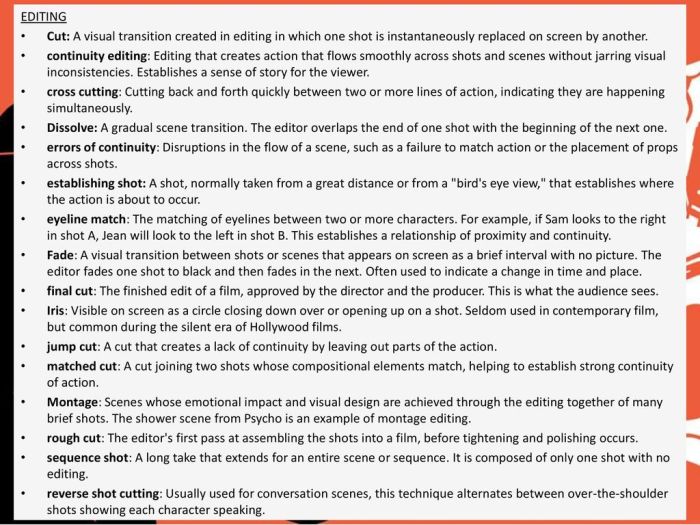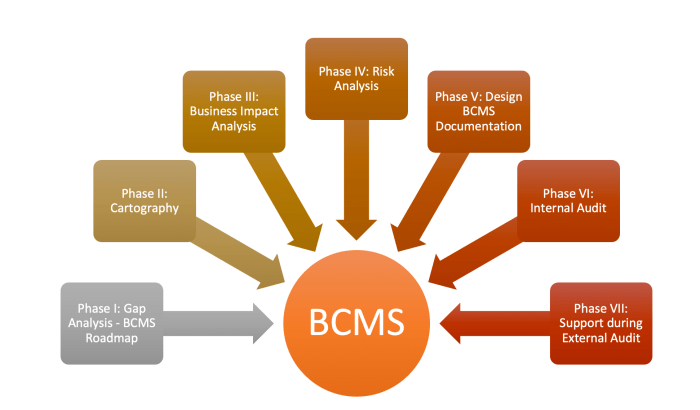In the continuity system a montage sequence usually – In the continuity system, montage sequences take center stage, serving as powerful tools for storytelling. These sequences, characterized by a series of rapidly edited shots, play a pivotal role in advancing narratives, developing characters, and conveying themes.
This comprehensive analysis delves into the narrative and thematic functions of montage sequences, examining their use in advancing plots, introducing characters, and establishing settings. It also explores the structural elements that contribute to their impact, including shot length, transitions, and sound design.
The Continuity System: Montage Sequences

Montage sequences are a powerful storytelling tool that have been used in film and television for decades. They allow filmmakers to condense time, convey emotions, and advance the plot in a visually engaging way.Montage sequences are typically composed of a series of short shots that are edited together to create a cohesive narrative.
The shots may be of different lengths and may use a variety of camera angles and movements. The transitions between shots can be smooth or abrupt, depending on the desired effect.
Narrative and Thematic Functions, In the continuity system a montage sequence usually
Montage sequences can serve a variety of narrative and thematic functions. They can be used to:
- Advance the plot by showing the passage of time or the completion of a series of events.
- Introduce new characters or locations.
- Establish the setting or mood of a scene.
- Convey emotions or inner thoughts of a character.
- Highlight a character’s arc or development.
- Explore social or political issues.
Structural Elements
The structural elements of a montage sequence can vary depending on the desired effect. However, some common elements include:
- Shot length: The length of the shots in a montage sequence can vary from a few seconds to several minutes. Shorter shots create a more fast-paced and energetic sequence, while longer shots allow for more detail and development.
- Transitions: The transitions between shots in a montage sequence can be smooth or abrupt. Smooth transitions create a more cohesive and flowing sequence, while abrupt transitions can create a sense of urgency or chaos.
- Sound design: The sound design of a montage sequence can play a major role in its overall impact. Music can be used to create a mood or atmosphere, while sound effects can be used to emphasize specific moments or actions.
Technical and Creative Considerations
Creating a montage sequence requires careful planning and execution. Some of the technical and creative considerations that filmmakers must take into account include:
- Editing techniques: The editing techniques used in a montage sequence can have a significant impact on its overall effect. Different editing techniques can create different rhythms and moods.
- Sound mixing: The sound mixing in a montage sequence is essential for creating a cohesive and immersive experience. The sound effects and music must be carefully balanced to avoid overwhelming the viewer.
- Color grading: The color grading of a montage sequence can be used to create a specific mood or atmosphere. Different color palettes can evoke different emotions and reactions from the viewer.
Historical Evolution and Cultural Impact
Montage sequences have been used in film and television for over a century. They first emerged in the early days of cinema, when filmmakers were experimenting with new ways to tell stories. Montage sequences quickly became a popular way to condense time and convey emotions, and they have been used in a wide variety of films and TV shows ever since.Montage
sequences have had a significant cultural impact. They have been used to create some of the most iconic moments in film history, and they have helped to shape the way that we think about storytelling.
Questions and Answers: In The Continuity System A Montage Sequence Usually
What is the primary purpose of a montage sequence?
Montage sequences serve various purposes, including advancing the plot, introducing new characters, establishing setting, conveying emotions, highlighting character arcs, and exploring social issues.
How do montage sequences contribute to the narrative?
Montage sequences can advance the plot by condensing time, introduce new characters by providing quick glimpses into their lives, and establish setting by showcasing different locations or environments.
What are the key structural elements of a montage sequence?
Typical structural elements include shot length, transitions, and sound design. Shot length determines the pace and rhythm of the sequence, transitions create visual flow, and sound design enhances the emotional impact.

